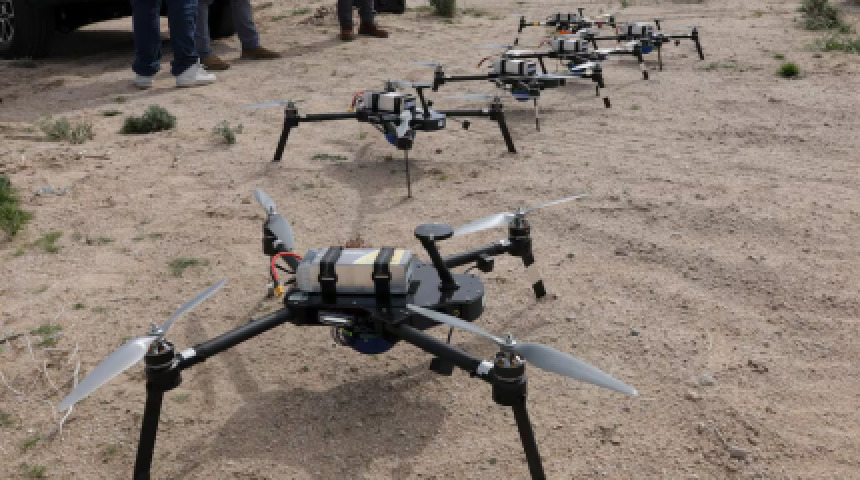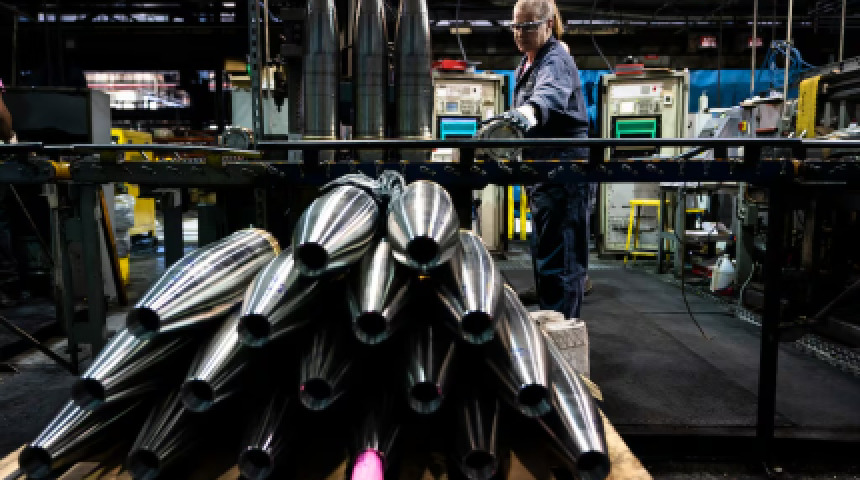五角大廈終止關島導彈防禦新雷達項目

(Missile Defense Agency).
美國國防部已指示導彈防禦局(MDA)停止開發原計劃用於保護關島免受高端空中和導彈威脅的新型AN/TPY-6雷達系統。 這一決定源於2025年1月7日時任國防部副部長凱瑟琳·希克斯(Kathleen Hicks)發出的備忘錄,該備忘錄指出,雖然AN/TPY-6的開發被終止,但目前已部署的雷達面板將保留作為實驗資產,未來可能納入關島防禦系統(GDS)中。
儘管希克斯的決定是在拜登政府任期結束時做出的,但政府問責局(GAO)指出,這些變更對新一屆政府並不具約束力。
五角大廈計劃建立一個精密的空中和導彈防禦架構,以應對來自中國和北韓日益複雜的威脅。 MDA已於去年夏天將首個AN/TPY-6雷達面板運往關島,計劃在2024年底進行首次飛行測試。 該雷達採用了MDA在阿拉斯加清晰太空軍基地部署的長程識別雷達(LRDR)技術。
關島防禦系統還將依賴多種仍在開發中的系統,主要由陸軍負責。 海軍將提供其宙斯盾武器系統的技術和能力。 陸軍計劃將現有的愛國者系統和其整合戰鬥指揮系統(IBCS)部署到關島,該系統能夠在戰場上連接任何感測器和發射器。 此外,還包括2023年底首次部署的中程能力導彈發射器。
陸軍還將引入愛國者雷達的替代品——下層空中和導彈防禦感測器(LTAMDS),該系統已獲得生產批准,並將其間接火力防護能力發射器納入,這些發射器正處於原型製造的最後階段。
隨著AN/TPY-6項目的終止,希克斯指示MDA將剩餘的宙斯盾關島系統開發資金優先用於提供最小可行的宙斯盾指揮控制和數據鏈能力,以實現標準導彈6(SM-6)在遠程追蹤下的攔截能力。 這將通過聯合追蹤管理能力(JTMC)橋接AN/TPY-2和LTAMDS雷達的數據。
五角大廈的備忘錄要求升級JTMC橋接,以應對來自中國的所有導彈威脅,並實現聯合戰術綜合火控能力——未來關島的聯合追蹤架構,用於協調的戰鬥管理、目標識別和電子防護。 這些升級應在2029年之前完成。
備忘錄還指示MDA加速關鍵的指揮控制整合工作,包括使陸軍操作的末段高空區域防禦系統(THAAD)能夠在IBCS中運作。
關島擁有一個永久的THAAD電池,稱為塔隆特遣隊(Task Force Talon),是防禦該島免受彈道導彈威脅的關鍵組成部分。
此外,陸軍和MDA應在2030年前將AN/TPY-2的測量數據整合到IBCS中,並在2033年前實現全面整合。
MDA長期以來一直使用AN/TPY-2雷達來追蹤彈道導彈,但雷神公司最近向MDA交付了一種新版本,採用了氮化鎵(GaN)技術,使其能夠在更遠的距離追蹤更複雜的威脅,如高超音速武器。
首個配備GaN技術的新雷達將部署到陸軍的第八個THAAD電池。 這些雷達可以以前沿部署模式運作,向海軍的宙斯盾彈道導彈防禦系統或陸軍的愛國者系統提供提示數據。 它是THAAD的主要雷達。
陸軍的新LTAMDS雷達也是由雷神公司開發的,也採用了GaN技術。
🔍 三大觀察重點
- AN/TPY-6雷達項目終止
五角大廈已指示導彈防禦局停止開發AN/TPY-6雷達,該雷達原計劃用於加強關島的導彈防禦能力。 - 關島防禦系統的多元整合
關島防禦系統將整合多種現有和新興的防禦技術,包括愛國者系統、IBCS、LTAMDS和THAAD,以建立一個多層次的防禦網絡。 - 技術升級與整合挑戰
隨著新技術的引入,如GaN技術的雷達系統,如何有效整合各種系統並確保其協同運作,成為未來的一大挑戰。
📍 地理位置標示(GPS Coordinates)
- 關島安德森空軍基地(Andersen Air Force Base, Guam)
- 緯度:13.5840° N
- 經度:144.9260° E
Pentagon Ends New Radar Effort Meant for Guam Missile Defense
The U.S. Department of Defense has directed the Missile Defense Agency (MDA) to cease development of the AN/TPY-6 radar system, which was intended to enhance Guam’s missile defense capabilities. This decision stems from a memorandum issued on January 7, 2025, by then-Deputy Secretary of Defense Kathleen Hicks, stating that while the development of AN/TPY-6 is halted, the currently deployed radar panel will be retained as an experimental asset for potential future integration into the Guam Defense System (GDS).
Although Hicks’ decision was made at the end of the Biden administration, the Government Accountability Office (GAO) notes that these changes are not binding on the new administration.
The Pentagon plans to develop a sophisticated air and missile defense architecture to counter increasingly complex threats from China and North Korea. The MDA had shipped its first AN/TPY-6 radar panel to Guam last summer, intending to conduct a flight test by the end of 2024. This radar utilizes technology from the MDA’s Long-Range Discrimination Radar (LRDR) deployed at Clear Space Force Base in Alaska.
The Guam Defense System will also rely on various systems still under development, primarily managed by the Army. The Navy will contribute technology and capabilities from its Aegis Weapon System. The Army plans to deploy existing capabilities to Guam, such as the Patriot system and its Integrated Battle Command System (IBCS), which connects any sensor and shooter on the battlefield, as well as Mid-Range Capability missile launchers first fielded at the end of 2023.
The Army will also incorporate the Patriot’s radar replacement, the Lower Tier Air and Missile Defense Sensor (LTAMDS), which has just been approved for production, and its Indirect Fire Protection Capability launchers, which are nearing the end of the prototyping phase.
🔍 Three Key Takeaways
- Termination of AN/TPY-6 Radar Program
The Pentagon has ordered the Missile Defense Agency to halt the development of the AN/TPY-6 radar system, which was originally intended to enhance Guam’s missile defense capability. - Multi-layered Integration of Guam Defense Systems
The Guam defense architecture will incorporate a wide range of current and emerging technologies—including the Patriot system, IBCS, LTAMDS, and THAAD—to establish a robust, multi-layered defense network. - Challenges in Technological Upgrades and System Integration
With the introduction of advanced systems like GaN-powered radars, ensuring smooth integration and operational coherence across multiple platforms remains a critical challenge.




回應文章建議規則: